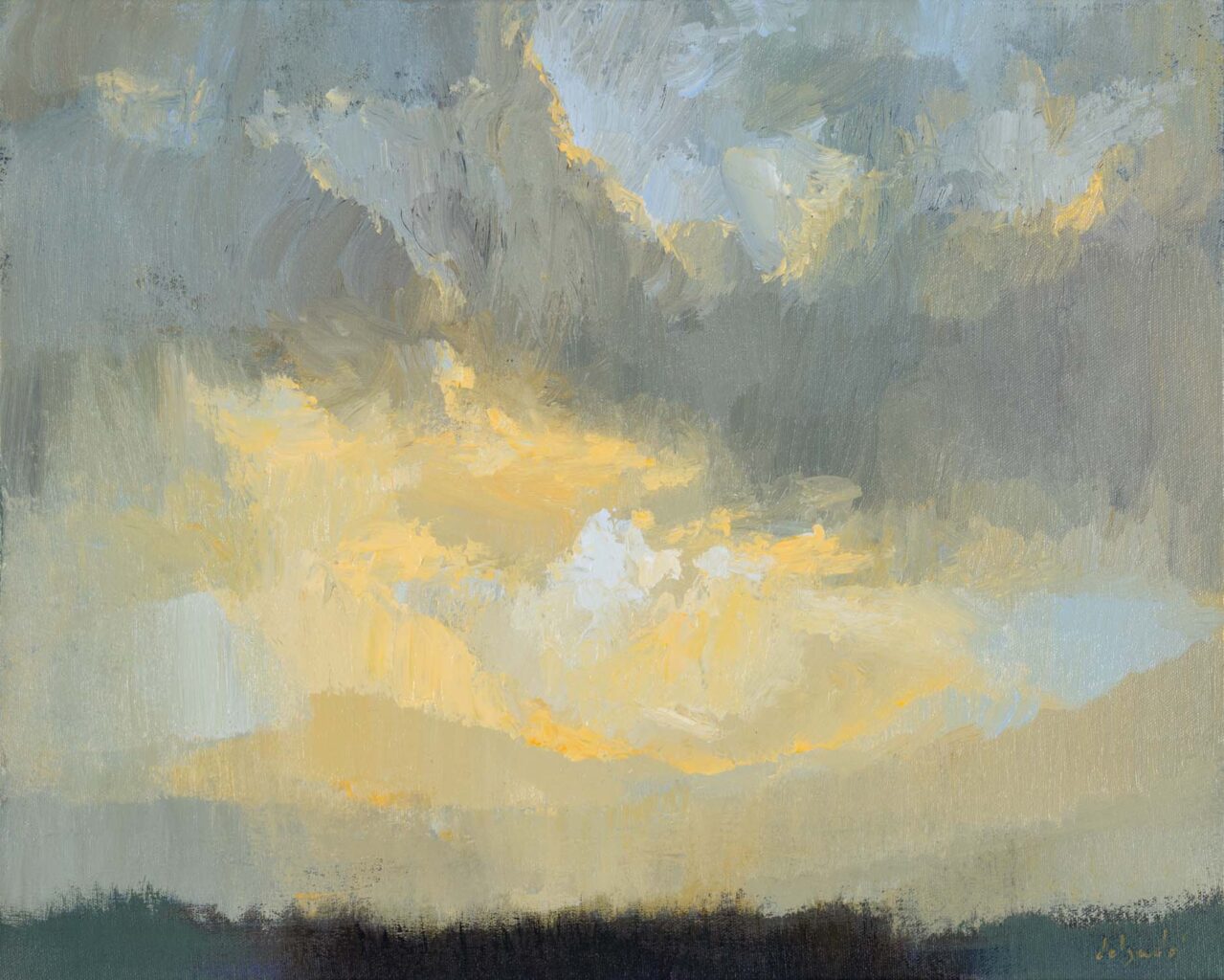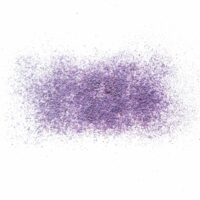In the context of the present dire world situation, in which we witness ever-present threats of destruction and darkness, thoughts about Beauty and the Beautiful assume an aura of utopian speculation. On the other hand, such speculations might be considered pathways to the light. Faced with suffering, destruction, and death, can a deeper questioning of Beauty and the Beautiful illuminate our world situation—or are we merely indulging in utopian fantasies? Christiane Haid, head of the Section for the Literary Arts & Humanities at the Goetheanum, gambles an answer to this important question.
In the first of his Five Meditations on Beauty1, Chinese poet and calligrapher François Cheng contrasts Beauty and Evil. Cheng describes how it is controversial and provocative to speak about Beauty in the face of the «pervasive misery, blind violence, natural disasters, and ecological disasters»2 that confront us today. For François Cheng, Beauty and Evil constitute two poles of the human reality of the universe in which we live.
Goethe gave us a similar picture in the third act of Faust Part II, where he juxtaposed Helen (the most beautiful woman in classical Greece, for whom heroes fought and died) with Phorkyas, the aged guardian of Helen’s father’s palace. Phorkyas is an unimaginably ugly old woman behind whom Mephistopheles hides. In Phorkyas, Helena is confronted by a being both ugly and evil—and, as Goethe presents it, the beautiful woman comes under mortal threat from Evil and Ugliness. Phorkyas announces to Helen that her husband’s homecoming could lead to her death. Her husband, inflamed with jealousy, contemplates sacrificing his wife to the gods. The encounter with absolute Ugliness and Evil triggers in Helen a crisis of self-knowledge. In the moment of greatest danger, she asks herself who she is and where she comes from. She recognizes herself in the mirror of the Ugly. She witnesses her true essence. Beauty, Ugliness and Evil are still mixed qualities in Goethe’s play.
Working from his own ideas of art and aesthetics, Rudolf Steiner discussed the Beautiful and Ugly within the context of his discovery of the dual nature of Evil. Not only the Beautiful but also the Ugly are for him elements that constitute art and artistic creation:
«If we wish really to take hold of art, we must never forget that the ultimate in art in the world is the interplay of the Beautiful and the Ugly, the presentation of the battle of the Beautiful with the Ugly. For only by looking upon the dynamic balance between the Beautiful and the Ugly do we stand foursquare within reality, rather than in a one-sided Luciferic or Ahrimanic reality that is not ours—a one-sided Luciferic and Ahrimanic reality, however, into which Lucifer and Ahriman strive to trap us.»3
A progressive artistic attitude of creativity in the modern age does not juxtapose two extremes, the Beautiful and the Ugly; rather, it represents to us an active interplay of two extremes. One extreme we designate Luciferic (formerly Beauty); the other extreme we designate Ahrimanic (formerly the Ugly).
Byung Chul Han, a philosopher with Korean roots who lives in Berlin, gave his 2015 book a title that can be read as a call to action: The Salvation of the Beautiful4. His philosophical inquiry into the history of the Beautiful concludes with the sentence:
«Today we find ourselves in a crisis of the Beautiful, insofar as the Beautiful has been dumbed down into statements such as ‹I like this, or I like that›—dumbed down to categories of comfort and the randomly pleasurable—dumbed down to cuteness. The Salvation of the Beautiful means, therefore, that the salvation of Beauty is salvation of that which binds things together.»5
If there is talk of salvation here, it points toward a something that was once at hand, but which has been lost to present-day culture.
«The Beautiful today is deprived of all blessing. It is no longer an advent of truth. No ontological difference, no Eros protects it from consumerism . . . Our Witnessing of the Beautiful gives way to a Liking for an attractive, pleasing consumer product.»6
But what have we lost here? What, then, is the meaning or task of the Beautiful or Beauty?
Han refers to Plato and points to the concept of ‹Binding› as one possible perspective for understanding. For Plato, Beauty partook of eternal Being,7 and therefore it was imperishable. By referring to ‹Binding,› Han aims at a layer of existence that appreciates the Beautiful as a quality endowed with duration; it points to the infinite. To grasp this aspect of Beauty, Han goes back to the starting point of philosophy: to Plato in ancient Greece.

Concerning the Ideal Ground of Beauty
In the Platonic dialogue ‹Hippias Major›8 the question of Beauty in a philosophical sense is explicitly asked for the first time. At the beginning of the conversation between Socrates and Hippias we find a beautiful girl. Hippias thinks he quickly can answer the question about Beauty by using the girl as an example. During the conversation, however, it turns out that Beauty cannot be a property of people and objects alone and that Beauty is also not a question of subjective feeling. Rather, the quality of objects and people described as endowed with Beauty has to do with those objects’ participation in a Beauty that stands above sense-given appearances and whose essence has yet to be understood. Plato attempts an understanding this question in his famous work Symposium. There he lets Socrates (who otherwise always figures as the wise man who captains discussions) tell us about the teachings of the priestess Diotima, whom Socrates had met in his younger years.
The core theme of the Symposium is homage to the god Eros. Thus, love is at the center of the talks. Diotima’s speeches about Love and Beauty are woven into the conversation by Socrates. The striving for the good, which Diotima takes as the primal motive of man, is realized in «procreation in the Beautiful, in body as well as in spirit.» Diotima tells Socrates that «All men carry procreative substance within themselves, physical as well as spiritual.» Socrates, however, does not immediately understand her, since the Beautiful always has something mysterious about it, difficult to comprehend. It cannot be grasped so easily in its full depth of meaning.
Diotima’s testimony extends to matters such as the physical procreation of the human being. It also includes general creative human activities in all areas of the world—from the formation of a beautiful soul to the creation of art and philosophy. The Ugly, on the other hand, remains sterile and unproductive. It generates nothing. It leads only back unto itself, because the Ugly «painfully withholds or inhibits procreative potential.» Love takes as its goal «generation and birth in the Beautiful,» one might say; it does not take as its goal Beauty as such, since in procreation we find the mortal and the immortal, in so far as this can be achieved by biological human beings.
This points to the peculiar nature of the Beautiful not as a quality to be attained in a material sense but as a power of the human being to transform the world and to develop the world creatively toward Beauty. In Plato above all, sensual, mental, and spiritual appearances of the Beautiful have as their common ground the all-encompassing idea of primordial Beauty, which in turn leads to virtue and thus to truth.
In this quote one senses a self-evident attachment to the ideal and to the spiritual, to which one must rise today. The question: does the threatened loss of the Beautiful find as a symptom a feeling of alienation from the spirit substance of the world? This is a question of topical urgency. Rudolf Steiner developed an aesthetic approach that remarkably ascribes to artists the task of transforming the sense world. He describes an artistic approach in which reference to the ideal primordial ground of the world becomes a guiding principle of artistic praxis.

Goethe as the Founder of a New Science of Aesthetics
In his often-reprinted 1888 essay Goethe as the Founder of a New Science of Aesthetics, Rudolf Steiner sketched an aesthetic theory that takes up Goethe’s method of perceiving the world. Steiner called this aesthetic theory developed on the phenomena of the sense world an aesthetics of the future. But what is that future? According to Steiner, Beauty, and its appearances (the radiance that shines forth from the artistically transformed object), emerges through the creative process. The artist brings Beauty to appearance in her confrontation with matter by means of creative spirit:
«The object which the artist sets before us is more perfect than it is in its natural state, but it contains none other than its own inherent perfection. Beauty is found in the tension between the object as such and the inherent perfection hidden within the object.»9
The artist does not imprint an idea on the material from the outside, as was often argued in aesthetic theories at the end of the 19th and beginning of the 20th centuries; rather, the artist brings to appearance something that is already contained in the material. This is a complex process. According to Rudolf Steiner, the artistic process is not about imprinting the Idea, as ideal concept, on the material. Rather, the work of art emerges during the artistic process by means of a perceptive confrontation of the artist with the material—by means of a continual re-questioning of what has been produced and what is re-perceived afresh in each new instance of artistic engagement. In this respect, the form that appears and which is judged again and again during the artistic process plays a central role in the stages of creation. It is possible that in this process a previously conceived idea disappears completely and that something previously unimagined or unintended emerges instead, and this new something proves to be ‹true› or ‹coherent.› According to Steiner, art is not a matter of the embodiment of a supersensible reality or of an Idea that acts as it were from the outside-in upon the given material—no, on the contrary, art is rather a «reshaping of the sense-given actual» by the creative powers of the artist.
Regarding Beauty, Steiner summarizes the dimension and essence of the artistic creative process in the following words at the end of the essay:
«The artist does not bring the divine to earth by letting it flow into the world; she elevates the worldly to the divine. Beauty is semblance because it conjures before our senses a reality which, as such, appears as an ideal world. Consider the What, but consider more thoroughly the How, because the How is what matters. The What remains bound to the sense-given, but the How reveals the ideal.»10
It is essential that the material of art receives an ideal appearance through the creativity of the artist, and that it thereby lifts the world of the sense-given and transforms or spiritualizes matter. The artist creates something that would not be there without her. Thus, the ‹world› from which the objects are taken for artistic process is not in itself already complete at hand. It needs the human being. The world is transformed by the human being—as if by a second creation. Admittedly, herein lies both the greatest and the most terrible potential of the human being—for it all depends on what she uses her powers to achieve. Whether the world is transformed artistically or made technically controllable and manipulable, the future of the human being and of the earth depends on this terrible potential of the human being. If necessary, technology can also have as its premise an artistic spirit.
Art as a Design Principle for all Disciplines
Rudolf Steiner’s efforts to turn all areas of life into art show that the creation of Beauty and thus creation according to artistic principles should not remain only a matter for artists and the visual or performing arts. Pedagogy becomes the art of education; medicine becomes the art of healing; agriculture becomes the art of agriculture; social science becomes the social art, and so on. What is meant by this? In pedagogy, the child is not understood as a satchel into which one crams as much knowledge as possible, nor is the child viewed as an object to be educated according to the demands and needs of the state and the economy. Rather, the pedagogue as an educational artist sees herself as a companion of a uniquely developing individuality which, like the artist’s material described above, already contains its inherent laws of development within itself. The educational artist only brings this already spiritually existent law to manifestation in her teaching and classroom work.
The doctor as a healing artist also orients herself towards the patient. The doctor becomes the patient’s companion on the path, a companion who views the illness as a challenge to the individual and who helps the patient understand the illness in its physical, mental, and spiritual dimensions so that the patient can find ways of coping. If, in the same sense, agriculture becomes the art of farming, then the individual farm with its people, animals, plants, landscape, and climate needs to be designed as a work of art, case by case, according to the individuality of the farm and its location in its local ecosystem. Pedagogical action, medical treatment and agricultural activity demand a creative individual who acts with tact and flexibility—an artist who acknowledges different people in respect to different situations and backgrounds. We can perceive here an intensely dialogic activity, an activity that creates freshly in respect to the given circumstances and in respect for the people involved.

If the art process today is a balancing between the forces of the Beautiful and the Ugly (between the dissolving Luciferic and the hardening Ahrimanic forces), then the Platonic view of the Beautiful widens out. In the age of the consciousness soul, this view is also widened toward the activity of the individual, who in each case struggles for Beauty or realizes Beauty and balance—or, we might say: grace and harmony. At the same time, the essential signature of our age is precisely such activity through which the sense-given is elevated to a realm spirit-ideal.
Beauty and Spirit
If we examine a notebook entry by Rudolf Steiner from 1918, the importance of Beauty becomes evident:
«The connection with the spirit breaks if it is not maintained by Beauty. Beauty binds the ‹I› to the body.»11
Here the focus is not on the creation of the Beautiful as such, but on Beauty’s effect, insofar as that effect can be experienced in objects, works of art, and cultural events of the performing arts. As a realization of the spirit in the phenomena of the sensory world, Beauty consequently has the capacity to enable the beholder to have a spiritual experience. And, insofar as the human is an I-being, their spiritual nature is addressed through Beauty. They feel that something has been realized in the world which concerns him as a spirit- being. One could also say that it reminds him of his spiritual home and identity. The ‹Binding› mentioned by Han is here given a tangible frame of reference: it is the connection between spirit and body, between the ‹I› and the physical being.
The ‹I› is the center of this activity that shapes the soul forces of thinking, feeling and willing. As a thesis, one can infer from the notebook entry that unless Beauty can act as a mediator for a connection to the world, the ‹I› cannot establish a relationship with the body; consequently, the spirit is cut off from the body. This consequence would entail loss of the spiritual and an orientation towards the mere sense-givenness of materiality. The effects of this orientation can be perceived as the general tendency of our present age.
Since the Corona virus, and even before that event, the question of the ‹system relevance› of art and culture has emerged. If one connects this question which has arisen in many places with a quotation from the popular book Homo Deus by the transhumanist Yuval Noah Harari, our present situation becomes even clearer:
«As soon as people believe (whether with good reason or not) that they have a serious chance of escaping death, the desire for life will ensure that they will no longer want to pull the rickety wagon of art, ideology, and religion; they will plunge forward, like an avalanche.»12
The desire for life refers to purely physical, naked survival, which has lost soul or spiritual dimension. The ‹fall forward› is a fall into a material world determined by algorithms, in which the free creative I-being no longer exists because a mechanically controlled mass avalanche has taken his place. When Dostoevsky writes, «Beauty saves the world», the importance of art and culture becomes clear. Beauty is not a concern for the design of likeable surface appearances, it is a concern for the deep heart dimension of our existence. The future depends on Beauty, especially in times of war.
This article was translated by Bruce Donehower.
Footnotes
- François Cheng, Five Meditations on Beauty. 2nd edition, Munich 2017, p. 16.
- Ibid.
- Rudolf Steiner, The Mission of Michael. Lecture of November 23, 1919, GA 194, 3rd edition 1983, p. 57.
- Byung Chul Han, The Salvation of the Beautiful. Frankfurt a. M. 2015.
- Ibid, p. 97.
- Ibid, p. 96.
- Plato, Symposion. 211 b.
- Plato, Complete Works: Hippias the Greater. 287 bf, translated by Ludwig Georgii, Heidelberg 1982.
- Rudolf Steiner, Goethe as the Father of a New Aesthetics. In: Kunst und Kunsterkenntnis, GA 271, p. 3.
- Ibid, p. 32 f.
- Rudolf Steiner, Wahrspruchworte. GA 40, P. 217.
- Noah Yuval Harari, Homo Deus. Munich 2017, p. 51.














Thank you for this revealing, urgent and timely message. I am encouraged and inspired by this publication. And the paintings I find stunning! Captivating! They show me what you talk about.
With Gratitude,
Margrit Haeberlin